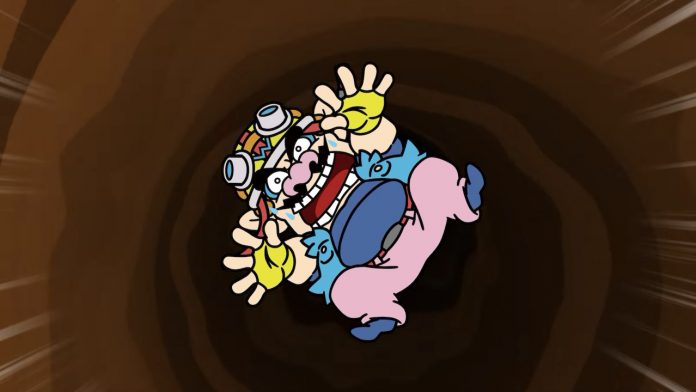*Disclaimer: WarioWare: Get It Together review code was provided by Nintendo for the purposes of this review. That being said, all opinions expressed in this review are entirely that of the author.
Everyone’s favourite creepy uncle is back, and this time, he has friends. WarioWare: Get It Together is the latest in Nintendo’s microgame compilation series and as you might expect, this might be their most zany entry yet. But is this year’s release more than just a weirdly fun party game you throw in front of your unsuspecting friends at 1am to freak them out? Yeah, I think so.
That Unmistakable Nintendo Nostalgia
No matter what it is, every Nintendo game has that charm, doesn’t it? Whether you’re galloping through Hyrule, talking to anthropomorphic hamsters, or throwing your hat onto T-Rexes, every first-party Nintendo release just seems to fuel everyone’s collective nostalgia, sometimes even when there’s no nostalgia there in the first place. Somehow, WarioWare, the fast-paced party game, still conveys that same nostalgia. From the obnoxiously bright and loud menu screen to the little victory animations the characters do, every inch of WarioWare sweats with charm and confident flamboyance.
Of course the ultimate Nintendo nostalgia WarioWare has to offer is its “Nintendo Classics” selection of microgames which, you guessed it, contain a range of microgames all based around old and new Nintendo licences ranging from Ice Climbers to Breath of the Wild to, my personal favourite, Mario Land for the original Game Boy. Despite only lasting five seconds at a time, these snippets of your life will flood each and every sense with pure, warm nostalgia with perfectly replicated sound effects and music. I’d be lying if I didn’t say that I teared up a little at this frantic celebration of all things Nintendo.
Bizarrely Beautiful
Something that Nintendo can seemingly never get wrong is its consistently excellent presentation. Regardless of the quality of the game itself, first-party Nintendo games are always lavish and bright, with sound design that stays with you long after you put it down. It’s only natural that WarioWare follows suit. Audio-wise, WarioWare chooses to keep it simple, opting to focus on the music and one or two audio elements per microgame. The music, while not entirely memorable, essentially dictates the pace of the game and your reaction time, with it speeding up gradually with each microgame you complete. And with each new microgame, a single voice can be heard, giving one or two-word instructions to the players like “Light” and “Plug it”. While these audio elements are far from complex on their own, their cumulative effect on gameplay is masterful, both guiding and hurrying the player simultaneously with ease.
Visually, WarioWare has a lot to show off. It seems as though every microgame is boasting a different art style; from vibrant water colour washes to finely detailed line drawings and everything in between. All of these styles blend seamlessly with the cute chibi-style character models of the game who, although vary in design quality and memorability, all feature incredibly fluid animations which match the same frenetic energy as the microgames themselves.
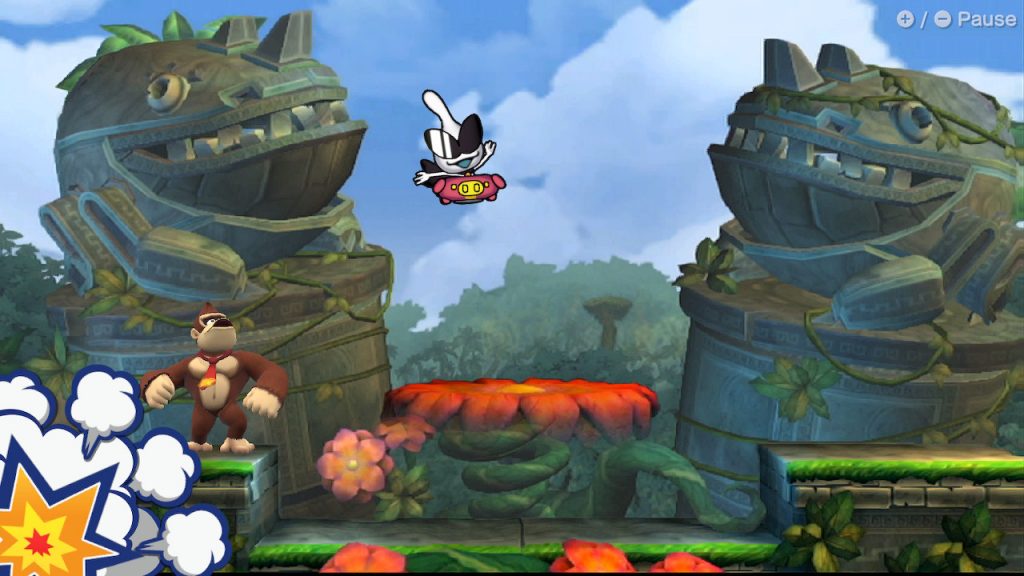
No matter what style is attempted, each and every stage, and character model looks very crisp and clear. Even the Story Mode overworld map is vibrant and rich in colour and stylistic design.
The Best Short-Lived Fever Dream You’ll Ever Have
If I told you the best part of this WarioWare game is its Story Mode, would you believe me? Well, buckle in, because I’m here to tell you it is. WarioWare‘s Story Mode sees Wario and his game designer friends being sucked into a video game infested with digital bugs. The story’s not going to be winning any Game Awards this year but it’s more than serviceable, with some pretty fun and witty dialogue sprinkled throughout.
The bulk of the Story Mode will have you completing stages that are essentially microgame compilations. As you begin a new stage, a new character joins your roster. While the surface-level gameplay is fundamentally no different to WarioWare‘s other modes (we’ll get there in a second), it’s this constant sense of progression that kept me hooked. And while a few of the characters share similar abilities, unlocking a new character every 15 minutes fuelled that need to play the next mission, just to see what was around the corner. It’s also a really nice touch that your group takes a photo after every stage, constantly reminding you that you’re progressing and adding members to your team. You’re all in this together.
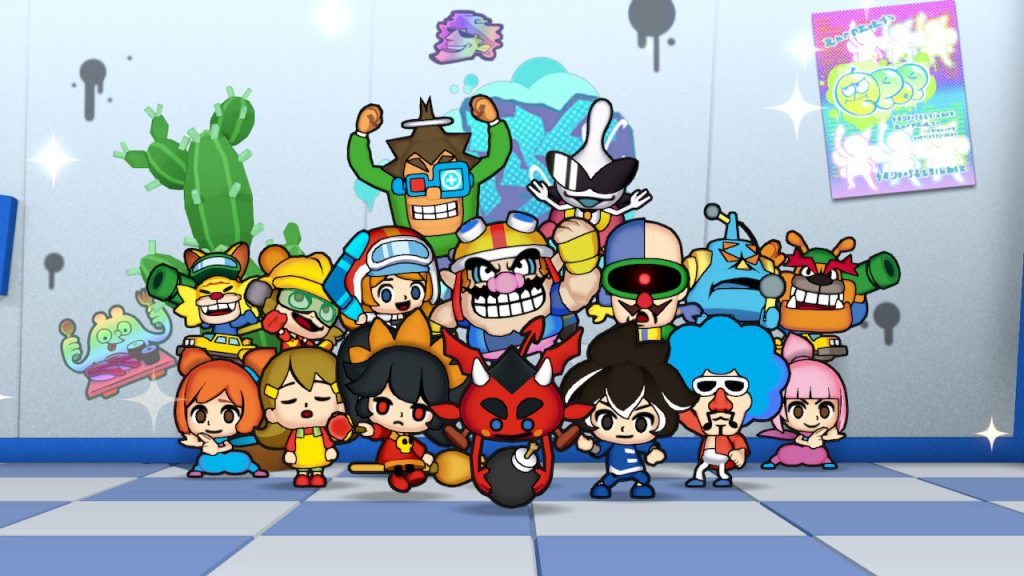
Also, each stage starts with a brief cinematic intro that introduces the character you just unlocked and the backdrop to the stage you’re about to play. These are stylish, bizarre, and obnoxious as all hell, with erratic editing, visceral camera angles, and banging music getting you pumped to play some more brazen microgames.
The other bookend to a stage is a “boss” fight. After you’ve completed all of the microgames in a given stage, you’ll be treated to a multi-layer microgame that doesn’t feature a timer. Instead, you’ll often need to perform several, more complex, tasks at once. A good example of this is the “Fantasy” stage boss level where you’re tasked with protecting a floating man against tentacles that are coming to grab him, all the while you’re trying to unlock the door on a plinth above and push the man up to it. While the quality does vary a bit with these (are you noticing a pattern yet?), they all act as a much-needed change of pace that keeps the Story Mode formula fresh and engaging.
In fact, I found WarioWare‘s Story Mode so engaging that as I hit the game’s fake ending, my heart genuinely sank a little. I was absolutely delighted to see my team sucked straight back into Wario’s little knock-off Switch. But unfortunately, all good things must come to an end. And WarioWare‘s Story Mode comes to a decisively abrupt end… just thirty minutes after that fake out ending. In total, the game’s Story Mode will last you around 4 hours. The sheer quality of this mode in terms of presentation and enjoyment only served to make its sudden finale all the more disappointing.
Wares A Little Thin
Now, the honest truth is that no one is buying this game for a Story Mode, even if it does let you play the entirety of it in 2-player co-op. Most people will want WarioWare for its selection of additional modes, and thankfully, there’s a lot of them. But again, as is the case with most aspects of WarioWare, the quality varies pretty significantly between these modes.
The most obvious inclusion is the game’s “Play-O-Pedia” mode, which acts a collection of all the microgames available in the Story Mode, and some additional unlockable games. But, for some unknown reason, there’s no option to play multiple microgames in succession. All you’re able to do is just choose one microgame and play it on repeat until you lose, or inevitably get bored. Similarly, there’s no endless mode or anything of the like, with the “All Mixed Up” mission of the Story Mode being the closest you’ll get to one. This seems like an odd oversight, but I imagine this could be patched in pretty easily later down the line.
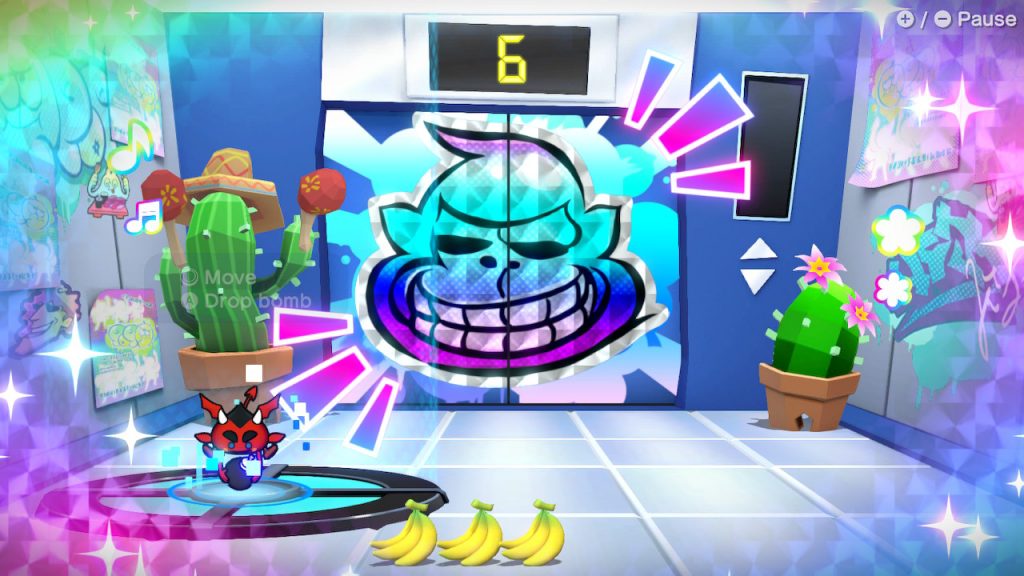
The “Variety Pack” is the real meat and potatoes here. Here, up to 4 players (on most games) can go head-to-head in a variety of mini games. The quality between these games varies wildly, more so than any other aspect of WarioWare. There are a few simple mini games like “Gotta Bounce”, which sees the players try to keep a ball in the air for as long as they can, and “High Five” which is basically volleyball. These mini games are simple and serviceable, giving you a few minutes of entertainment before you put the Joy-Con down and never return.
Then you’ve got some genuinely creative and fun mini games like “Balloon Bang” (a version of hot potato where you both take turns playing microgames and winning one gives you the chance to blow up your opponent with a balloon), “Sly Angle” (where players compete in a series of extremely brief micro-microgames to earn a point that they can put on a board in an attempt to eventually form a triangle, with the player with the largest triangle winning), and “Deulius Maximus”, which is by far the best of the bunch. This mini game gives you two separate modes: “Lighting Round”, which sets you and your opponent against each other in standard microgames, the fastest to beat the microgame wins, and the opponent loses a life. And “Standard Round”, in which you and your opponent only lose a life if you fail the microgame altogether. These modes are inventive and wild, leading to some tense and desperate split-screen action that will have you nostalgically screaming at each other like the days of old.
Unfortunately though, the rest of WarioWare‘s “Variety Pack”, at best is pretty dull, and at worst, is wildly imbalanced. For example, the “Frenemy Frenzy” game, which is basically Smash Bros. Lite, gives each player a randomised character, which can lead to quite a few unfair and frustrating rounds as some are much more suited to a fighting game than others.
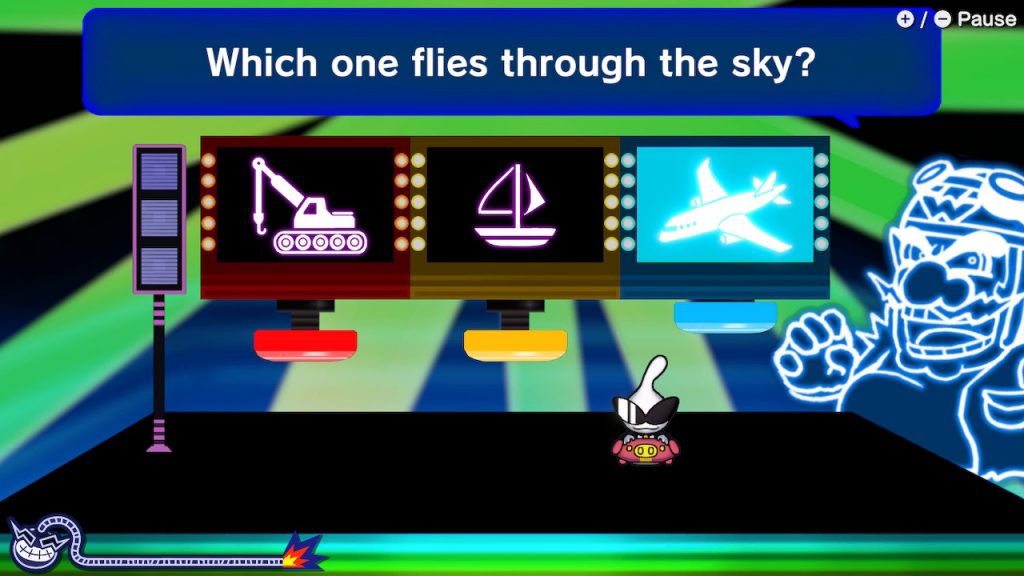
The last mode is the “Wario Cup”, a series of updating weekly challenges that offer alternative spins on standard microgames. If you’re desperate for more WarioWare, I imagine this mode will keep you satisfied for a bit. And that’s just the point. After your first ~6 hours with the game, the creativity and charm that was so vehemently present soon fades, and all you’re left with is a series of half-baked additional modes. But then again, if you’ve got a bunch of good friends round, these additional modes are likely to keep you all competing feverishly for hours.
Context Is Key
What will keep you coming back, though, is the surprisingly varied selection of microgames on show in WarioWare. Which is just as well, seeing as that’s kind of the whole game. While any cynic could boil down all of the microgames as simply “Touch This”, “Dodge This” or “Push These Together”, the wildly varying contexts of each microgame will have you engaged and impressed throughout.
There’s memory games, physics puzzles and more, each one with their own uniquely bizarre backdrop and narrative. One second you’ll be plugging a man’s nose, the next you’ll be pushing a giraffe towards a tree so it can eat. Some microgames are, admittedly, a little obtuse, but the breakneck pace at which they’re hurled at you won’t let you get frustrated for more than half a second.
There’s also a fair amount of variety with how you approach each microgame as a different character with different abilities. For instance, in the microgame where you have to grab four fish, Wario’s best method is simply to fly around and grab them, whilst Cricket can jump into an entire row, or Spitz can shoot an entire row. It’s not always necessary, but the slight change in mechanics can occasionally make some microgames feel fresh again.
WarioWare had me in the first half with its unique, nostalgic Nintendo charm and stupid, zany fun, but upon finishing its story and being faced with a range of lacklustre party games it lost me. Will I go back to it? Yes. Will it be a staple of any and every party/gathering I have this year? Absolutely. But will I ever play it by myself again? No.
It may be a Game of the Year contender for some, and who knows, it might win me back, but WarioWare has left me with some complicated and conflicting final thoughts.
Final Verdict: 7.5/10
Words By Cameron Swan
